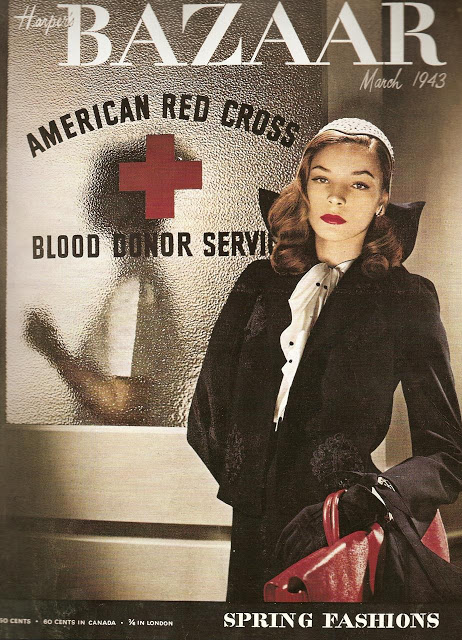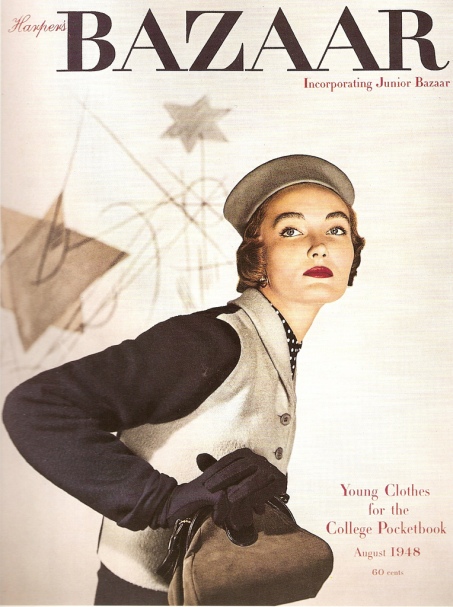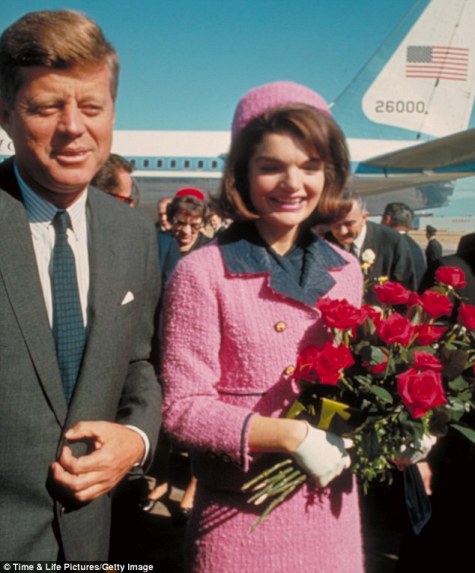Below is another glimpse into the kind of papers that will be presented this coming Saturday May 7th at The Annual Research Symposium of the Fashion and Textiles: History, Theory, Museum Practice Program at FIT’s School of Graduate Studies.
NEW WOMEN, NEW CLOTHES: LOUISE DAHL-WOLFE, FASHION PHOTOGRAPHY, AND WORLD WAR II
By Laura Donovan

Harper’s Bazaar cover, 1943.
On June 14, 1940, the Nazi occupation of Paris began. The Fashion Group, an assembly of women formed in New York to promote and protect the business of fashion, called a meeting to discuss the impact this would have on American commerce. Having just recovered from the economic devastation of the Great Depression, it was pertinent to strategize a means of continued creation despite being cut off from French designs. Although some were hesitant to continue without the guiding force of Europe, it was decided that the best way to survive the uncertainty of war to promote a uniquely “American Look.” Despite hardships and limitations, professionals in the fashion industry joined together to forge a new direction that was uniquely suited for the contemporary American woman.

Harper’s Bazaar cover, 1948.
Carmel Snow, a founding member of the Fashion Group and editor of Harper’s Bazaar, was dedicated to promoting the new recurring motifs of patriotism, elegant escapism, and American style in her magazine. Assisting her with this endeavor was staff photographer Louise Dahl-Wolfe (1895-1989). A pioneer in the field of environmental fashion photography, and a visionary with color Kodachrome film, Dahl-Wolfe became one of the preeminent contributors to Harper’s Bazaar during the World War II era. The extensive collection of Dahl-Wolfe’s fashion photographs offers visual documentation of this formative period. Dahl-Wolfe’s photography exemplifies the themes adopted by Bazaar, and highlights even the most nuanced implications of World War II in American fashion.
In this paper, I will examine the photography Louise Dahl-Wolfe produced for Harper’s Bazaar from 1938 to 1950. The images, along with copies of the magazines in which they originally appeared, will be analyzed as the extant manifestation of the American fashion industry’s reaction to the turbulent World War II era. Findings within these photographs will support the conclusion that the Louise Dahl-Wolfe photography collection is an important and unique primary source recording this formative period in American fashion.
TRAGEDY, SENSATIONALISM, AND CLOTH: A THEORETICAL LOOK AT JACQUELINE KENNEDY’S PINK SUIT
By Taylor Elyse Anderson

Image credit Time & Life Pictures/Getty Images
There is an undisputed fascination that surrounds the pink suit Jacqueline Kennedy wore the day her husband was assassinated. Currently stored at the National Archives in Washington DC, the suit will remain out of the public’s view until the year 2103. In a 2013 interview with the New York Times, museum curator Phyllis Magidson stated that if put on the display, the suit would “produce hysteria.” In that same article, author Catherine Horyn summarized the peerless historical significance of the suit writing, “curators cannot think of another historical garment imbued with more meaning, and also deemed too sensitive to be shown.”
Literature – both scholarly non-fiction and fiction – has addressed this iconic garment, exhaustively piecing together its unknown history, cultural significance, and fashion provenance. This paper does not intend to offer another piece of the suit’s historical puzzle. Rather, it uses Kennedy’s suit as a case study in considering the talismanic nature of cloth and clothes, particularly in tragedy, grief, and even its consequent sensationalism.






Pingback: Louise Dahl-Wolfe – Wikipedia – Enzyklopädie